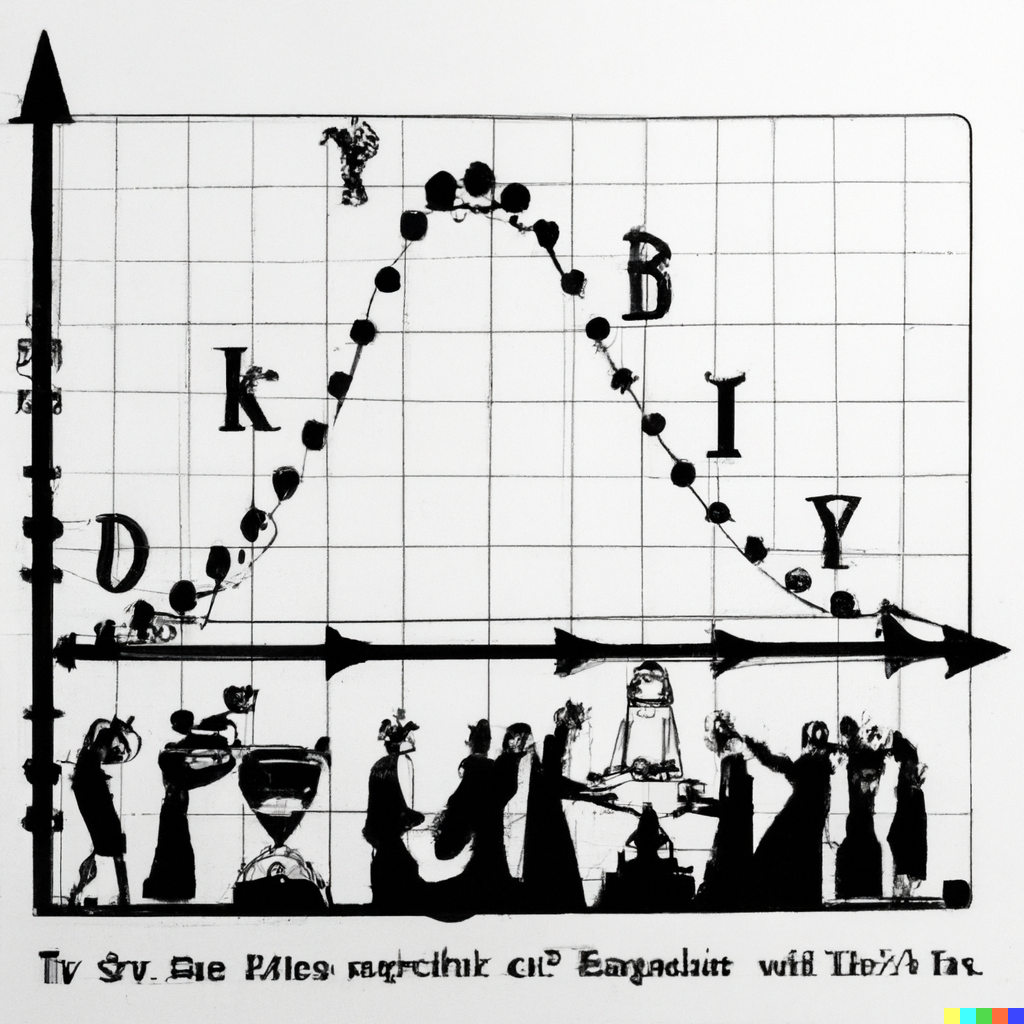Team vibe and the goldilocks zone
Everyone likes to make a difference at work. To see your effort move the needle. Not everyone, however, is keen on the all-in commitment this mindset often leads to. 50+ hour work weeks. Crunch time.
At the other extreme, some prefer a uniformly steady workstream. Work must be kept predictable so that brain power is reserved for all the other things in life. Not all can stomach the trade-off this takes though. Order is typically achieved by carving out fiefdoms–often at odds with the goals of the wider org–and the work becomes largely meaningless.
There is no singular, right path. Some join early-stage startups to get what they are after. Others luck into a job at Stable Corp and never leave.
Those are the tails of the distribution, however. Most people fall predictably and comfortably in between the two extremes.

I tried to get DALL·E to draw a normal distribution. I got this instead.
We’ll call the range that sits around the middle the goldilocks zone. That is the vibe you want to shoot for on most teams.
Choose first-and-foremost projects that make a difference. Bring team members in early in the planning process so they feel invested in the outcome. Keep sharing context throughout execution. Team members who have context and the autonomy to make smart choices will deliver better work every time because a) every one of those things is intrinsically motivating, and b) the best opportunities for improving the outcome and/or cutting scope are only evident to the person hands on in the work.
Yet keep a vigil. Aggressively cut scope and defer work in order to maintain a realistic timeline. More than any other factor, project size (smaller = better) is the single biggest predictor of success.1 What it looks like to get this right is to work at a sustainable pace on a series of successful, iterative projects. Teams that do this build up a palpable sense of momentum.
The other thing to look out for is toxic behavior. It doesn’t matter how comfortably the team is situated inside the goldilocks zone if the space is toxically uninhabitable. That is why it is absolutely necessary to foster a sense of psychological safety in every team member.
The industry is young. It is likely most software engineers have not yet had the chance to work on a highly successful team. Hopefully this post gives a sense of the vibe of a highly successful team, so you can compare it with your current situation and identify what aspects (if any) are lacking.
Notes
- Sandi Metz’s Practical Agile Development: A Challenge From the Trenches talk tipped me off that project size dominates over Agile vs Waterfall methodology. I assert that the pattern generalizes to any other project factor as well.